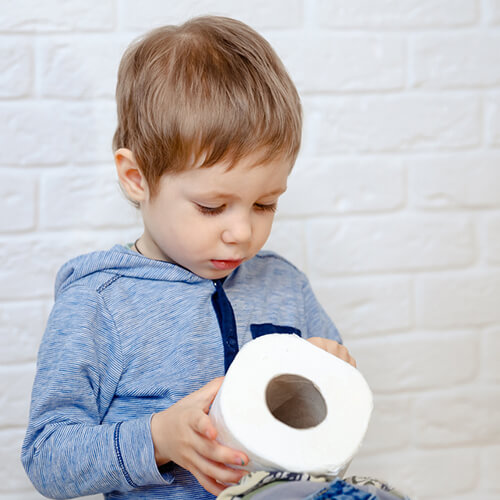Toilet training can be a stressful and challenging time for both children and their parents and each child’s needs will differ between children. There is not one pathway to helping your child toilet train which is why it’s important to have an in-depth discussion, review and evaluate the correct pathway forward with an occupational therapist. Being able to go to the toilet independently is an important life skill and sometimes may take longer than expected, particularly if you have a child with additional needs. Taking one-step at a time and having someone to help guide you through the process may help to reduce the stress that is sometimes associated with toilet training.
Our consultative approach will assist us to identify the following factors for consideration:
Factors that contribute to toilet training
- Family History of kidney, bladder and bowel conditions or dysfunction
- Infections
- Constipation
- Mobility needs
- Communication needs
- Low Muscle Tone
- Family History of bedwetting
- Infrequent voiding
- Feeding difficulties or food avoidance issues
- Anxiety around using the toilet
- Environment considerations
- Sensory aversions or avoidance behaviours
Skills Required for successful toileting include
- Awareness levels
- Ability to communicate
- Ability to hold
- Co-operation to go to the toilet
- Ability to follow instructions
- Motor planning and sequencing
- Functional ability to perform the steps to go to the toilet e.g. Dressing/undressing, wiping.
Child readiness to start the toileting training process
There are some signs that can tell you that your child is ready to toilet train however, this is not always the case and could be dependent on other factors such as; having an underlying medical condition. Although, it is worthwhile to keep a watchful eye on the following as good indicators that your child may be ready to progress to toilet training.
- Your child expresses curiosity and watching others go to the toilet.
- Your child’s nappy stays dry for up to 2 hours.
- They may be resistant to wearing a nappy or they are inclined to take their nappy off after its wet or soiled.
- Your child starts to communicate that they have done a wee or a poo or indicating they need to do a wee or a poo.
- They are able to sit in one position for up to 2-5 minutes.
Goal setting for toilet training: When it comes to toilet training, it’s important to have clear and achievable goals. Once we evaluate the stage of toileting your child is at, your occupational therapist can assist with chunking down to smaller, realistic and achievable goals and help to keep you and your child on track. Even though the process can understandably be frustrating at times, it’s important to remember that children all learn in different ways and at a different pace and there could be different factors impacting on their ability to progress with their toileting goals.
Once a goal is determined, your occupational therapist can help to work out actionable tasks to achieve those smaller, bite size goals. The aim is to also have everyone involved should be on the same page; this could include spouses, grandparents, early educators and other members of your allied health or medical intervention team.



